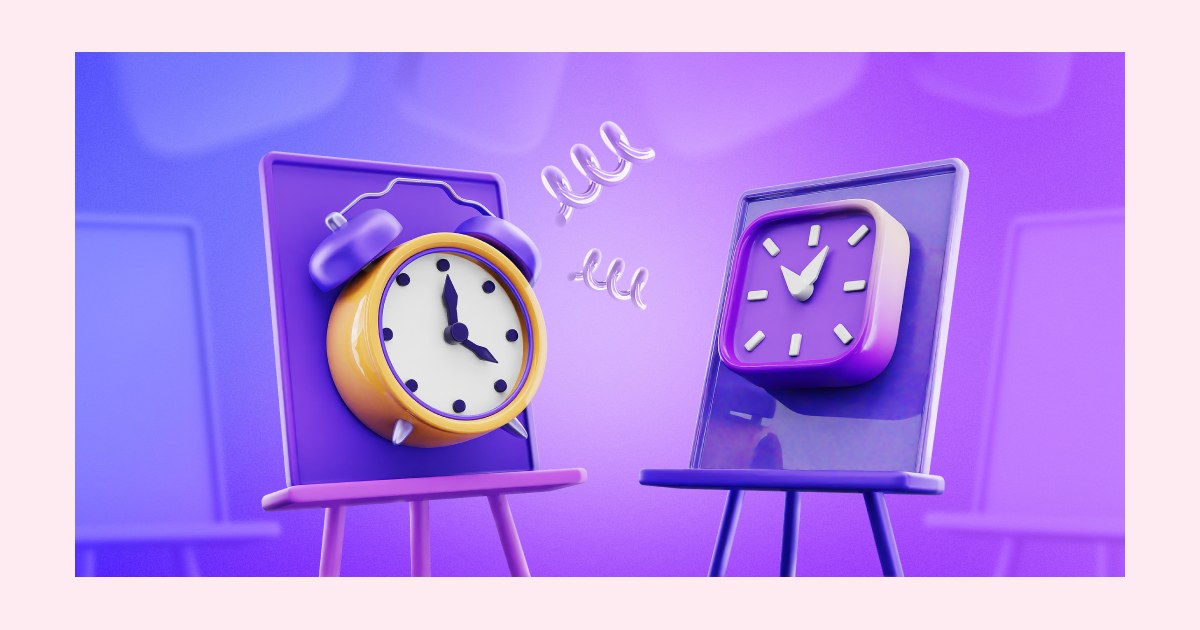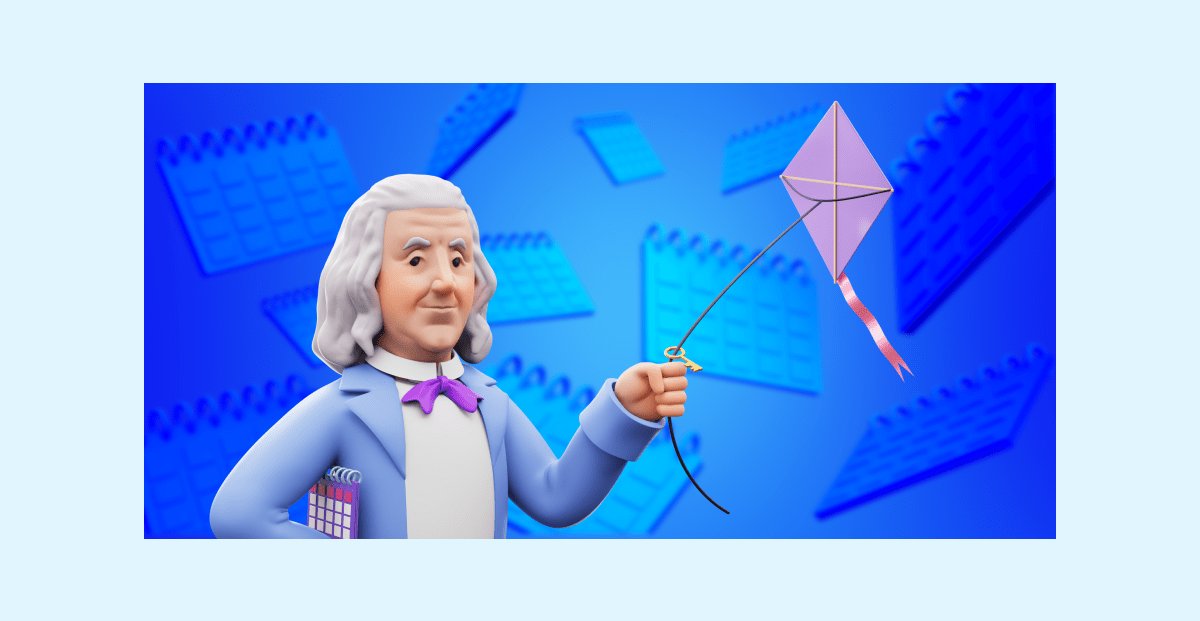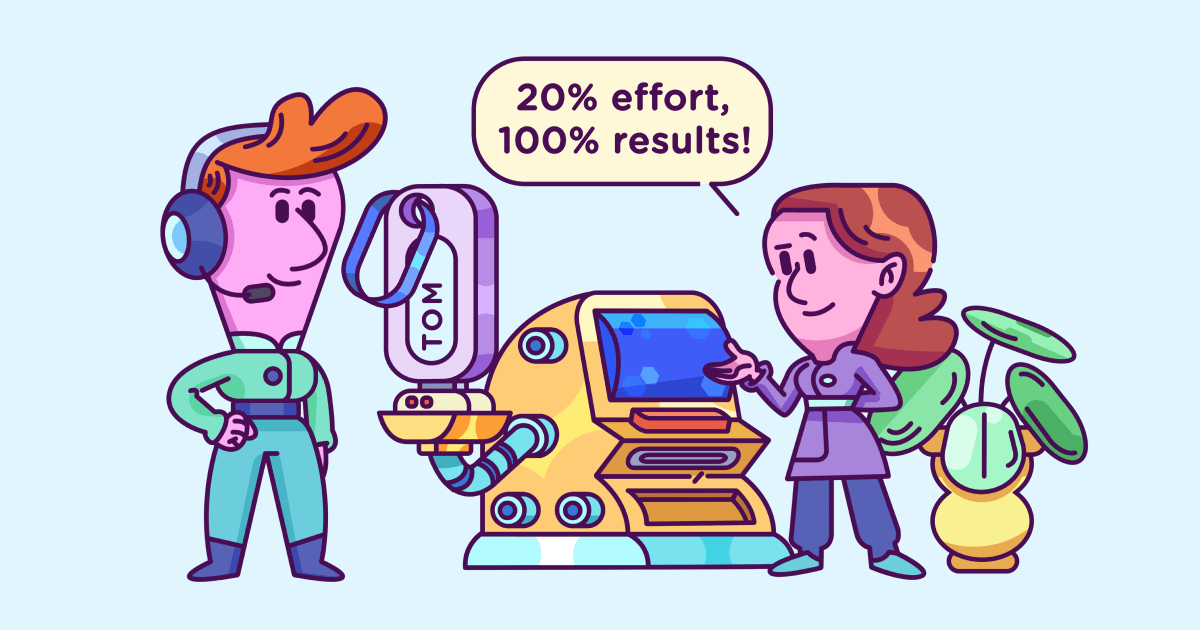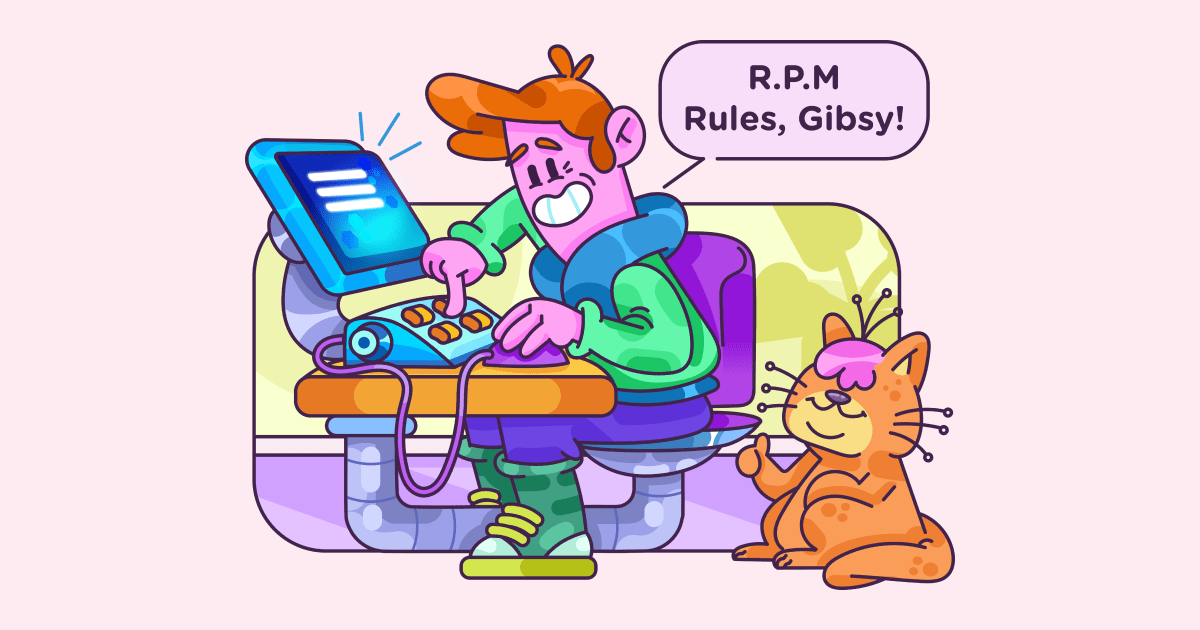I tried keeping a to-don’t list for a week
Last updated on: September 27, 2022
Let’s be honest.
How did the last productivity hack you tried work out for you?
Since you ended up here today, something tells me it wasn’t the perfect match for your lifestyle, and now you’re probably willing to give the next life-changing productivity method a chance.
But you already wasted a couple of precious seconds googling how to get more things done, and your to-do list isn’t getting any shorter.
Actually, it doesn’t even need to.
This time, I decided to take one for the team and test one more productivity technique so that you don’t have to.
Enters to-don’t list.
But, what is a to-don’t list and should we let it into our lives? Will we all turn into productive geniuses after writing a lengthy list of forbidden tasks?
Buckle up and read on, because I’m about to walk you through my personal to-don’t list experience so you’ll get a better view of whether this productivity method is worth your while.
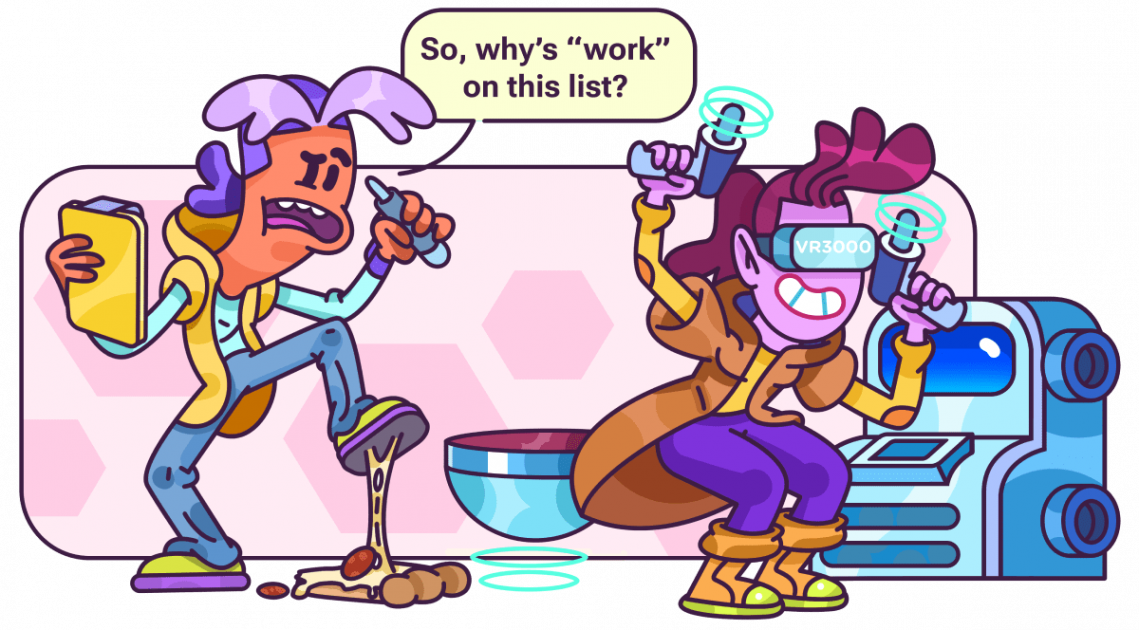
Table of Contents
What is a to-don’t list?
A to-don’t list is similar to a to-do list, with one exception — it consists of the tasks you shouldn’t do.
Unlike a to-do list where you’re likely to cross off a task once it’s finished, a to-don’t list usually consists of tasks and habits you’d like to avoid in the long run.
So, once you write down your to-don’t items, it won’t be necessary to check them off.
But, since you’ll still need a way to track your progress, you can either use a bullet journal tracker or a habit tracker app to measure your progress and monitor your to-don’t tasks.
These tasks could be anything you’d wish to stop doing — from spending too much time on social media to forgetting to water your plants.
What matters is that you’re aware of the habits that do you harm and you’re ready to kick them.
How to make a to-don’t list?
Even if you’re not quite able to pinpoint the exact habits that might be working against your productivity, that still doesn’t mean you cannot create a to-don’t list.
You can start by imagining your worst workday ever.
Think about all the events that lead up to your worst-case scenario. Do you frequently have to context-switch, or have a hard time ignoring digital distractions?
My workday, for example, usually goes downhill when I don’t get enough sleep and I have to power through a headache. So, naturally, to avoid my day turning into a nightmare, I’d start by putting Don’t sleep less than 8 hours on my to-don’t list.
So, if you’d like to give a to-don’t list a go, you’ll need to deep dive into your memory first and track down everything that wreaks havoc on your productivity — and build your way up from there.
Now, in case you’d wish to skip the painful recollections of a workday gone wrong, you don’t need to go through the reminiscing process.
Simply, think about all the tasks that you frequently tackle throughout the week that bring you little to no value — and put them on your to-don’t list.
This way, you’ll skip the uncomfortable reminiscences and still set sail on the journey to becoming your most productive self.
(At least that’s how the story goes.)
Why did I try making a to-don’t list?
As you might have figured from my rambling about my lack of sleep, I’m not really the epitome of a healthy lifestyle. I mostly get around 5–6 hours of sleep and count on large amounts of coffee to keep me up and running.
Also, to be honest, I felt quite tired of chasing after deadlines week in and week out — so I decided to dive deeper into my daily routine and track down all the damaging patterns that led me to procrastinate and not get my focus on.
💡 Clockify Pro Tip
Do you procrastinate on beating procrastination too? Find out what an expert had to say on our habit to leave tasks for tomorrow:
Since a to-don’t list sounded like a logical productivity hack for eliminating unwanted behavior, I figured I had nothing to lose — except for my weak spots.
Five habits I put on my to-don’t list
For the purpose of the experiment, I decided to dig deep into my memory and mentally recreate my worst workday ever.
Turns out I didn’t need to go too far, since just the day before my experiment I suffered from a headache caused by my habitual lack of sleep.
So, I was definitely off to a great start.
For the rest of my to-don’ts, I can’t really say I had rock-hard evidence of their harmful effects. But, I had a hunch they were not working in my favor either — so I put them on the list.
Since starting off by avoiding several things at the same time seemed like it could prevent me from discovering the positive and negative effects of each individual item on my list, I decided to avoid one thing at a time — or, one thing per day, to be more exact.
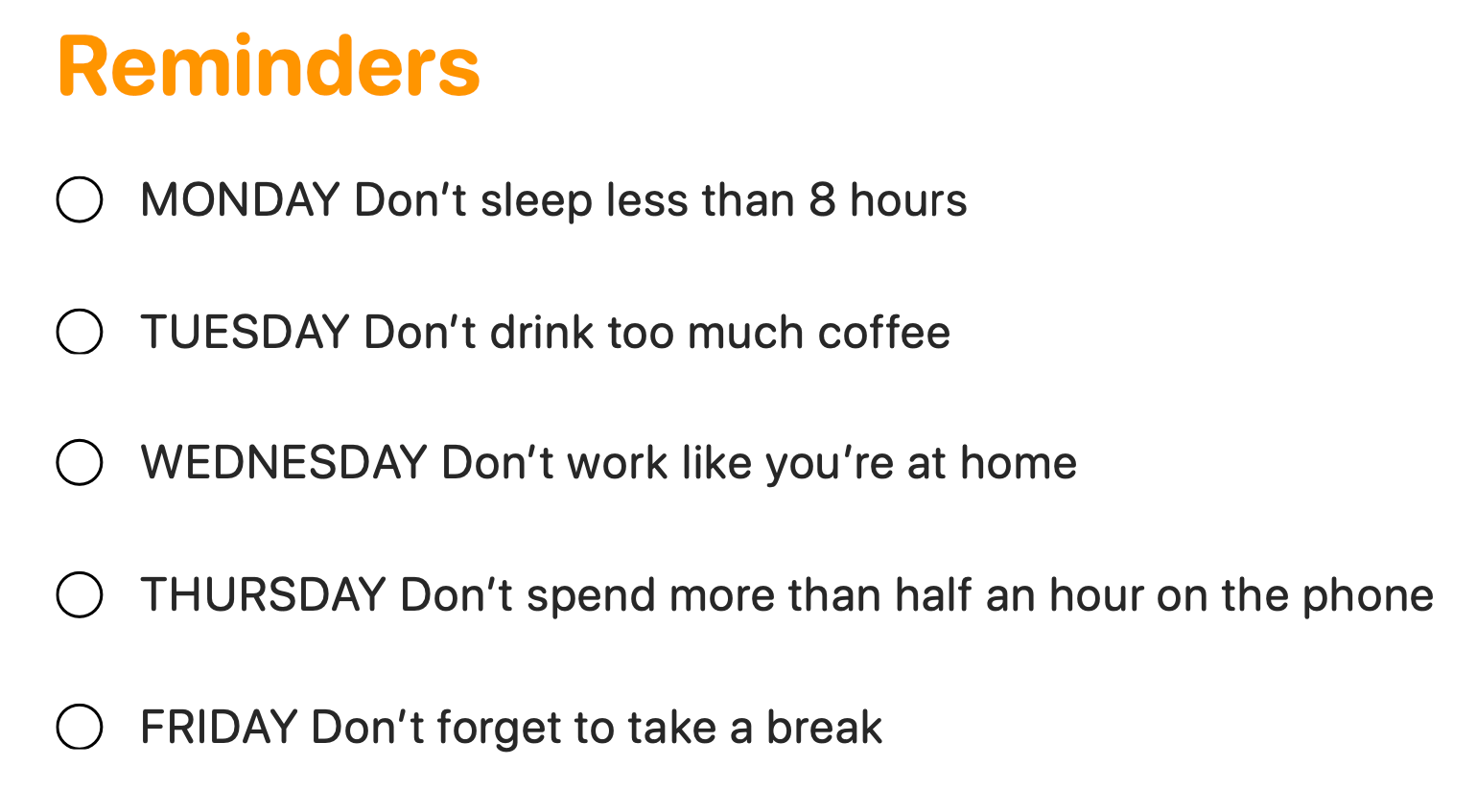
So, I pinpointed five habits that I’d do better without, plotted my weekly to-don’t schedule, and sailed my way into the week.
Day #1 — Don’t sleep less than 8 hours
My first to-don’t might seem quite obvious. You don’t need to be a productivity guru to know that the lack of sleep can leave damaging consequences on your health. Science has already proven that time and time again.
Still, although I was aware that sleep is the strongest productivity tool, more often than not, I chose to sacrifice my rest just so that I could squeeze in one more episode of my favorite TV show.
You can only imagine how my morning after usually unfolds. I snooze my alarm clock one too many times, rush my way into the day, and end up taking an afternoon power nap just so that I can fight my way through all the tasks.
I guess these were the reasons enough for the lack of sleep to earn a high place on my to-don’t list.
So, after plotting my to-don’t list on Sunday, I set my alarm for 7 a.m. and went to bed at 11 p.m.
As you might have guessed, I had trouble sleeping.
Since my last memory of me being in bed at 11 p.m. goes back to kindergarten, I should have expected that I wouldn’t be able to doze off as soon as I turned the lights off.
Still, I did get more sleep than I usually do, so I cannot say I didn’t notice instant benefits.
I had little to no trouble memorizing things, made fewer mistakes, and even completed everything from my to-do list. (Yes, I did keep a to-do list alongside my to-don’t list.)
All in all — Monday flew by in an instant, and I didn’t even think about my afternoon nap.
At least not until 8 p.m. when I dozed off in an instant. But that’s a whole different story.
Day #2 — Don’t drink excessive amounts of coffee
Anytime that I want something done, I turn to coffee. It’s almost as if coffee is my power fuel, and I can’t get anything finished without my caffeine intake.
Still, since I did notice I sometimes have trouble sleeping after one too many cups of coffee (I just chose to ignore it, obviously), it was time to confess I had issues with coffee.
Also, since I couldn’t stop checking myself for the symptoms of memory loss ever since I read an article claiming that too much caffeine increases the risks of memory impairment, I just knew coffee needed to be banned.
But, knowing myself all too well, I didn’t dare risk going about my day with zero caffeine in my body. So, I decided to limit myself to no more than two cups of coffee and started my day.
Unsurprisingly, I reached my daily intake limit within the first three hours of my workday.
But, I guess this one might have happened simply because I forgot about my to-don’t list and the promise I was supposed to keep.
Naturally, I started panicking that my forgetfulness was a symptom of caffeine-induced memory loss.
Since I had an unusual number of tasks to complete that day, I went through my day without even thinking about grabbing another cup of the bitter brown liquid. Or maybe it was all due to my fear of forgetfulness — I can’t tell.
Nonetheless, my day without an excessive amount of coffee went surprisingly well — I managed to complete all my tasks, and even finished half of my article that day.
Yet again, I crashed on my couch at 8 p.m. sharp — but since my workday was over long before that incident, I guess we don’t need to count that one in.
Day #3 — Don’t work like you’re at home
Maybe this to-don’t sounds unusual — especially since I really love working from home.
But, if you ever had a chance to see me working in my natural habitat, you’d know what I’m referring to.
I’m ashamed to admit that not only do I rarely get out of my pajamas for work, but I also tend to sit cross-legged everywhere but behind a desk. I may also like to write my articles with the all-time pop hits going loud in the background.
Although I didn’t really see anything wrong with my work style, I wanted to check whether a slight change would bring about an improvement in my productivity.
Now, why fix something that’s not broken?
Well, I wasn’t one hundred percent it wasn’t broken — at least judging from the pain in my back.
So, before rushing to turn on my laptop right after jumping from bed, I decided to put on my “work clothes.”
Even if it turned out that my outfit didn’t have anything to do with my focus and productivity levels, I knew that if I was dressed up for work, I’d be more likely to go for a chair instead of the floor.
I also decided to skip my usual playlist for the day and turn to a soft white noise mix.
After a couple of hours of writing, I spotted myself sitting cross-legged and hunched over my desk like a turtle. Although I didn’t find myself automatically moving to the floor (that one would really scare me), I realized that my bad posture was a habit too hard to kick.
When it comes to the change of music, the “no lyrics sounds” might have helped me go back to my text quicker whenever I was faced with an interruption.
Day #4 — Don’t spend too much time on the phone
Even though I like my coffee more than I like my phone and I can resist the urge to pick up my phone, ever since I tried to engage in deep work a while ago, I became aware of the harmful effects of too much screen time.
But, despite me being aware of all the risks that come with mindlessly scrolling through social media, sometimes I tend to grab my phone as soon as my mind gets stuck on a sentence.
Usually, this habit doesn’t do anything good for my focus, since I just end up in the social media rabbit hole. But, sometimes I stumble across a post that sparks my inspiration, and I end up believing that my phone might be a magical inspiration-producing device.
This time, I decided not to go into the rabbit hole, so I put my phone away.
Initially, I wanted to lock my phone in a drawer, but I realized that my drawer doesn’t have a lock and that there was no point in doing that since I would be able to control myself.
Little did I know that my optimism wouldn’t last longer than my first writer’s block.
As soon as I lost my focus in the middle of writing, I reached for my phone. Realizing it was safely secured in the drawer, I couldn’t quite figure out what my next step would be.
Was I supposed to stare at my document until the block went away?
I decided to do just that and not let my phone overpower me. I may have had to resist the urge to turn to the team chat app and see what’s new there, though.
After ten minutes or so, my sentences began to take shape and I didn’t even notice that my fingers started gliding across the keyboard.
All things considered:
Me: 1
Phone: 0
Day #5 — Don’t work without breaks
I have to admit that when times are busy, I usually forget to take a break.
Although this habit does not negatively affect my tasks, I usually end up extremely tired at the end of the day.
Naturally, testing a to-don’t list sounded like a perfect opportunity to try and kick this habit — so I decided to work the Pomodoro way to make sure I took plenty of breaks.
As soon as my workday began, I started a Pomodoro timer, and dove right into my tasks.
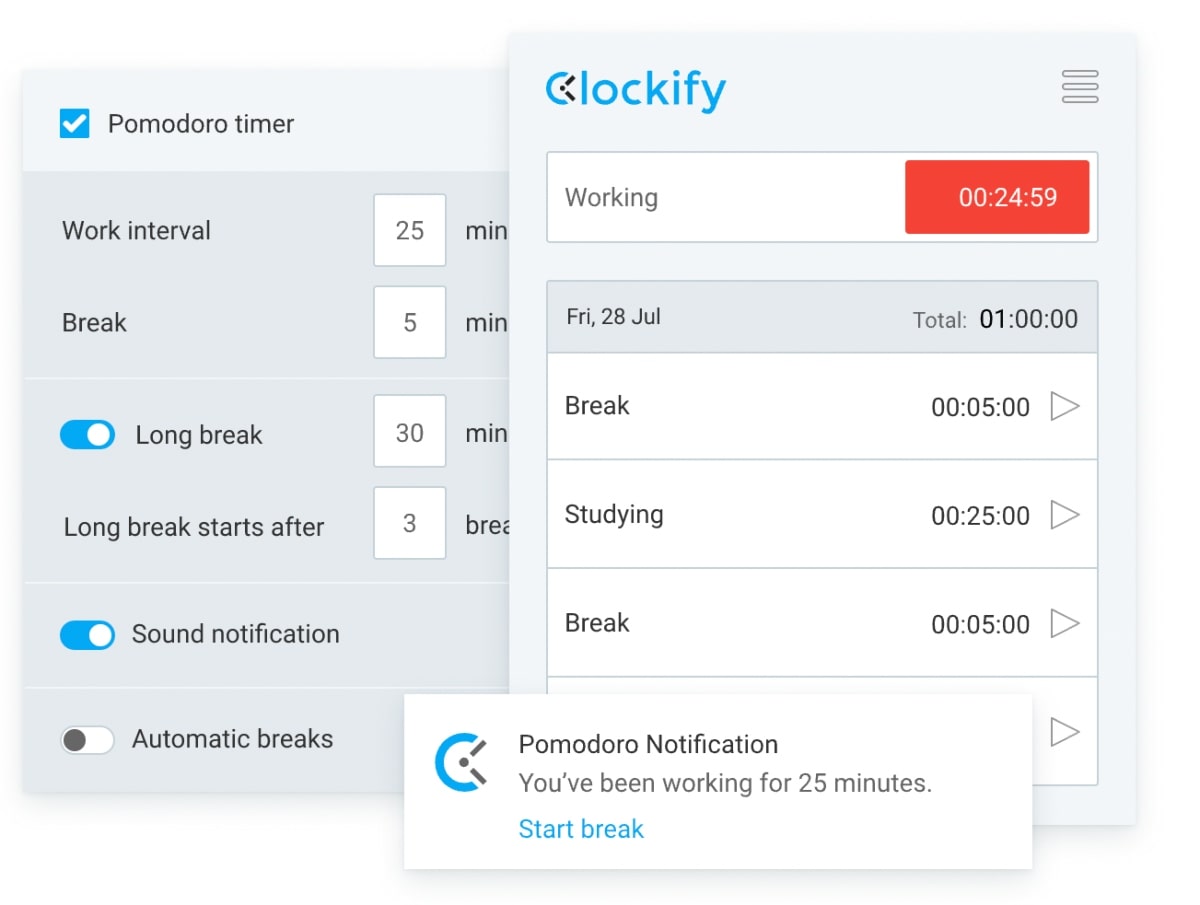
Although I wasn’t really used to working in short 25-minute intervals, I didn’t have any issues stepping away from my desk when the timer notified me it was time for my first break.
However, as the day went on, I found it harder to stop writing as soon as the timer went off.
Also, even though I did my best to stick with my initial decision to take frequent breaks, most of the time I spent my five-minute breathers scrolling through social media. Naturally, my breaks flew by and I didn’t feel more energized when I needed to continue where I left off.
Still, I knew that my Friday’s to-don’t went wrong due to my lack of self-control — so I wasn’t really able to pin all the blame on the Pomodoro technique.
I should have known better and restricted my screen time right from the start — or at least went for the Flowtime technique, which goes much better with creative tasks than the Pomodoro method.
To-don’t list, take two — Don’t avoid one thing at a time
Since reaching a final verdict on whether a to-don’t list actually works would not be fair without trying not to do a couple of things at the same time, I decided to give my to-don’t list one more go.
I was supposed to:
- Sleep at least 8 hours the night before,
- Try not to reach for my kettle too many times throughout the day,
- Get dressed and sit tight in my work chair,
- Put my phone away, and
- Take enough short, but meaningful breaks.
Now that I look at my list, I have to admit it sounded like an ideal workday.
Until the moment it turned into a nightmare.
Even though I did manage to get enough sleep, (which filled me with enough optimism for the day), trying to remember to avoid all the things from my list felt like an additional task.
I most certainly did not sit like an adult throughout my entire 8-hour shift nor did I manage to skip my abnormal dose of coffee. As soon as I got stuck on a sentence or had to respond to a direct message quickly, I immediately forgot about my initial plans and went back to one of my old habits.
The one thing I did manage to follow through on was not forgetting to take a break.
Still, since this time, I decided to follow the Flowtime method and track the time I spent on each task, it was only logical that I wouldn’t find it hard to take a break from writing — as I was the one to decide when the break time was.
Nonetheless, I ended up feeling more guilty for my workflow going wrong than I felt while crafting my to-don’t list at the beginning of the experiment.
What are the pros of a to-don’t list?
All productivity methods come with a fair share of benefits — and, here are the ones I noticed while trying to keep my bad habits at arm’s length with a to don’t list.
✅ A to-don’t list leads you to discover your weak spots
Whether you work from home or cross things off your to-do list in a brick-and-mortar office, you’re probably already aware that your workflow could benefit from some tweaking.
Still, the majority of us do not usually keep every little annoying habit in mind, much less do anything to kick them when we’re busy chasing deadlines.
But, this is where a to-don’t list comes in.
When you’re required to reflect on your workday gone wrong, you become able to spot all the patterns that lead up to it and know what exactly it takes to avoid them.
✅ A to-don’t list helps you become more honest with yourself
We usually tend to be quite optimistic when creating our to-do lists.
At the moment of writing the lists, it seems like there’s nothing we couldn’t do — and some of us even tend to try to fit two days’ worth of tasks into a couple of hours.
Then, when the moment to actually cross tasks off our to-do list comes, we usually fail to prioritize and get right into the simplest and least time-consuming to-dos, leaving out the more complex ones.
In the end, we simply postpone unfinished tasks for tomorrow and decide to try all over again.
Although you don’t need to give up on your to-do list to make sure you reach your deadlines, putting everything you shouldn’t be doing on paper (instead of focusing on to-dos only) could actually help you set more realistic goals.
Not only does a to-don’t list prevent you from falling into the habits you’d like to avoid, but it also helps you become aware of your limits when plotting your day.
Since I’m now aware that sleeping less than 8 hours leads me to make more mistakes while writing, I’ll make sure to put Review on my to-do list. This way, I’ll minimize the chances of my text coming back to haunt me and disrupt my workflow when I least expect it.
What are the cons of a to-don’t list?
After paying close attention to my workflow while following a to-don’t list, I’m now able to let you in on all the disadvantages you might face if you decide to try this productivity method yourself.
❌ A to-don’t list is not a replacement for a to-do list
If you’re used to writing down every little task that you need to tackle throughout the day, you might expect a to-don’t list to reduce the paper clutter from building up.
But, unfortunately, a to-don’t list won’t replace your to-do list.
Since a to-don’t list usually consists of habits you’d like to kick and tasks that don’t bring you any value, you’ll still need to keep a to-do list close.
As expected, relying on a list of tasks to avoid won’t help you memorize everything you should give your attention to.
❌ You’ll need to remind yourself not to do things
If you’re anything like me and you feel like your bad habits are deeply ingrained in your mind, you’ll definitely need a reminder not to do things.
Although I didn’t have a hard time remembering not to do one thing at a time, as soon as I tried avoiding several habits at once, I caught myself unconsciously repeating the unwanted behavior I was set to quit.
To avoid this from happening to you too, you could try making your to-don’t list as visible as possible or even setting an alarm to remind you multiple times a day not to fall back into old habits.
What is my overall rating of a to-don’t list?
Although I easily buy into every new productivity method I stumble across, after a week of dissecting my flaws and doing my best to dodge them, I’d have to say it would be unfair to score this method poorly.
In its very essence, a to-don’t list is supposed to help you recognize the harmful patterns that prevent you from becoming your most productive self.
So, it must have worked then, right? I should be cured for good.
Well, as much as it sounds amazing, kicking a habit takes more than a workweek, not to mention kicking a long list of habits that sabotage my productivity every step of the way.
Still, if I’m going to be completely honest here, I wouldn’t be able to pin the blame on a to-don’t list for my inability to keep all the promises I made to myself at the beginning of my experiment.
My to-don’t list did not turn my workflow upside down nor did it make me work in my pajamas — that was all on me.
But, what it did do for me was help me notice something was rotten in my routine and give me enough confidence and motivation to introduce some changes — and sometimes, that’s exactly the puzzle piece that’s missing.
FINAL RATING: ⭐⭐⭐⭐
Wrapping up: Don’t beat yourself up over your to-don’t list
I’m not going to sugarcoat it — picking through your worst habits can be rough, and it might even negatively affect your self-esteem.
At least that’s what happened to me.
Most of the time, I felt like I needed adult supervision to get through my days without repeating the same old mistakes.
But, you know what they say — You can’t succeed if you don’t pinpoint your own errors.
OK, I may have made that saying up.
But the point’s there — accept your weak spots, make note of them, and let them go.
You might just be surprised how quickly they disappear from your to-don’t list.
✉️ Did you ever try making a to-don’t list? Did it help you kick any of your habits? Let us know at blogfeedback@clockify.me and we might include your experience in this one or one of our future articles. And, if you liked this blog post, share it with someone you think would be interested in reading it.

